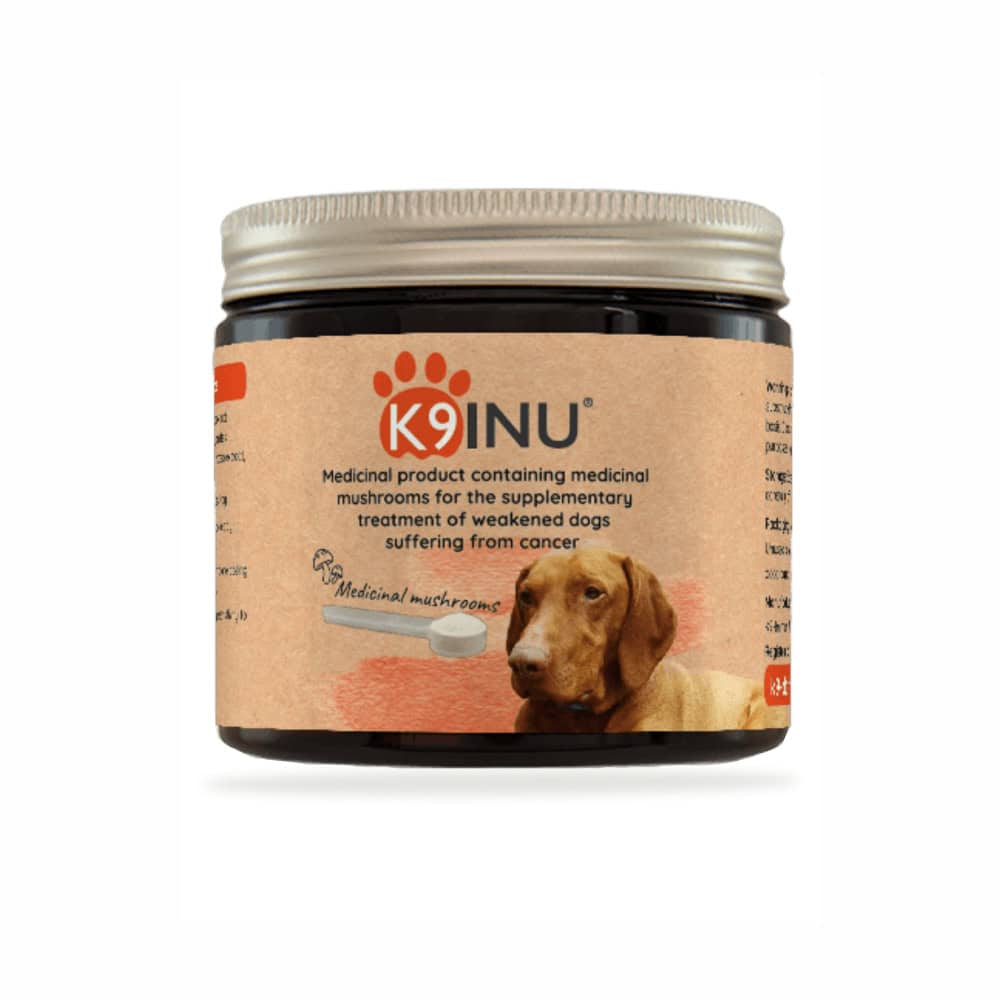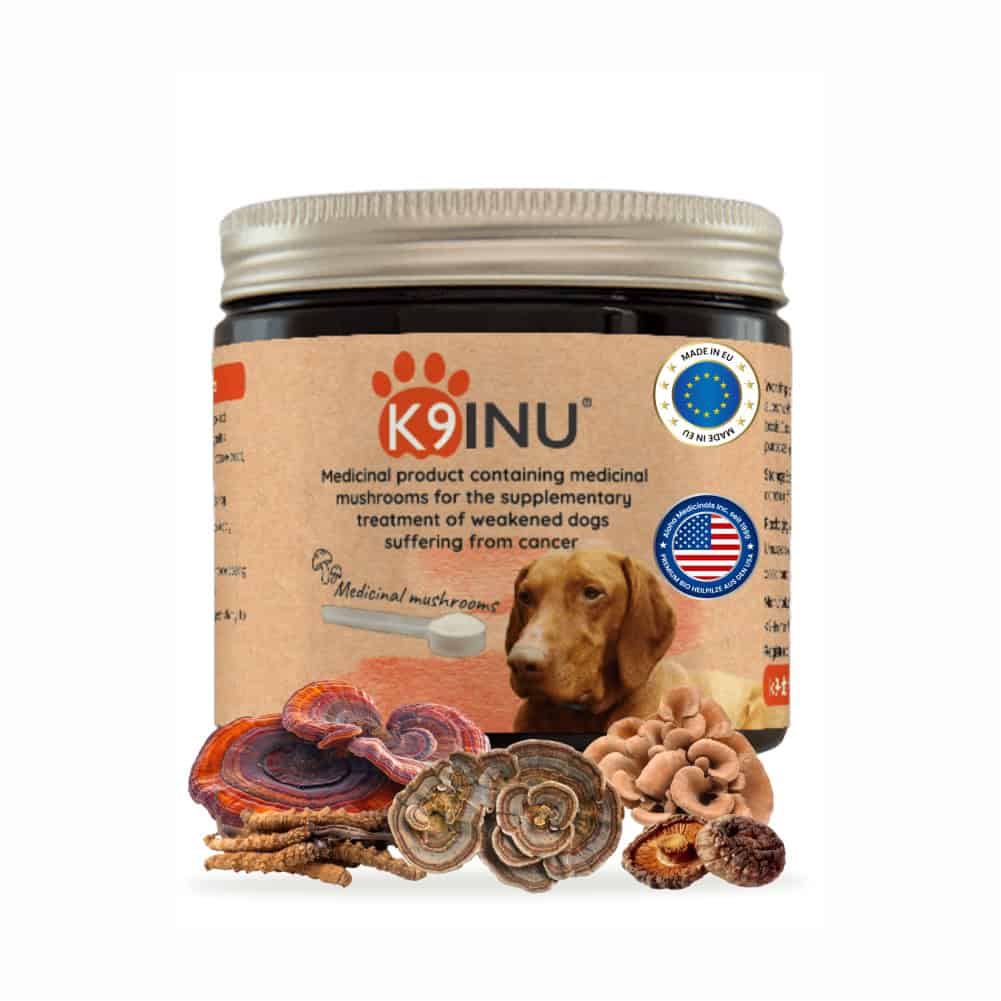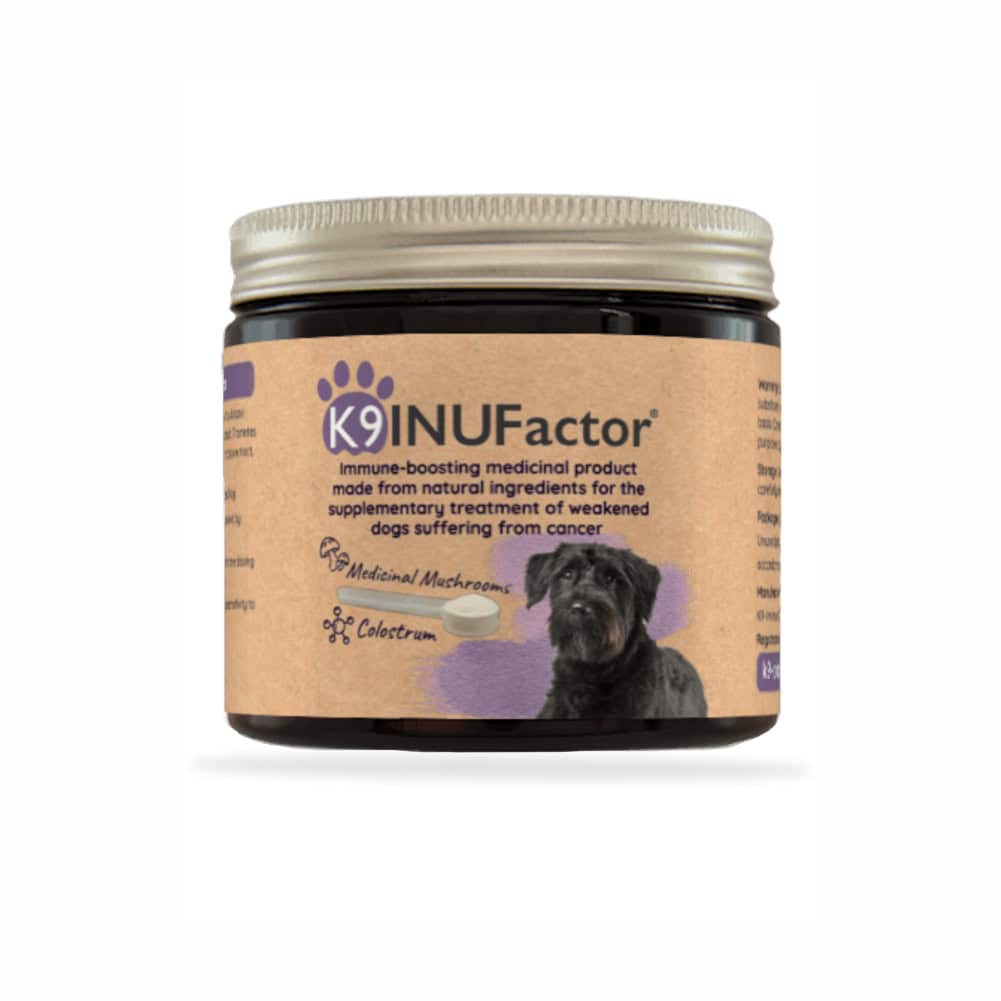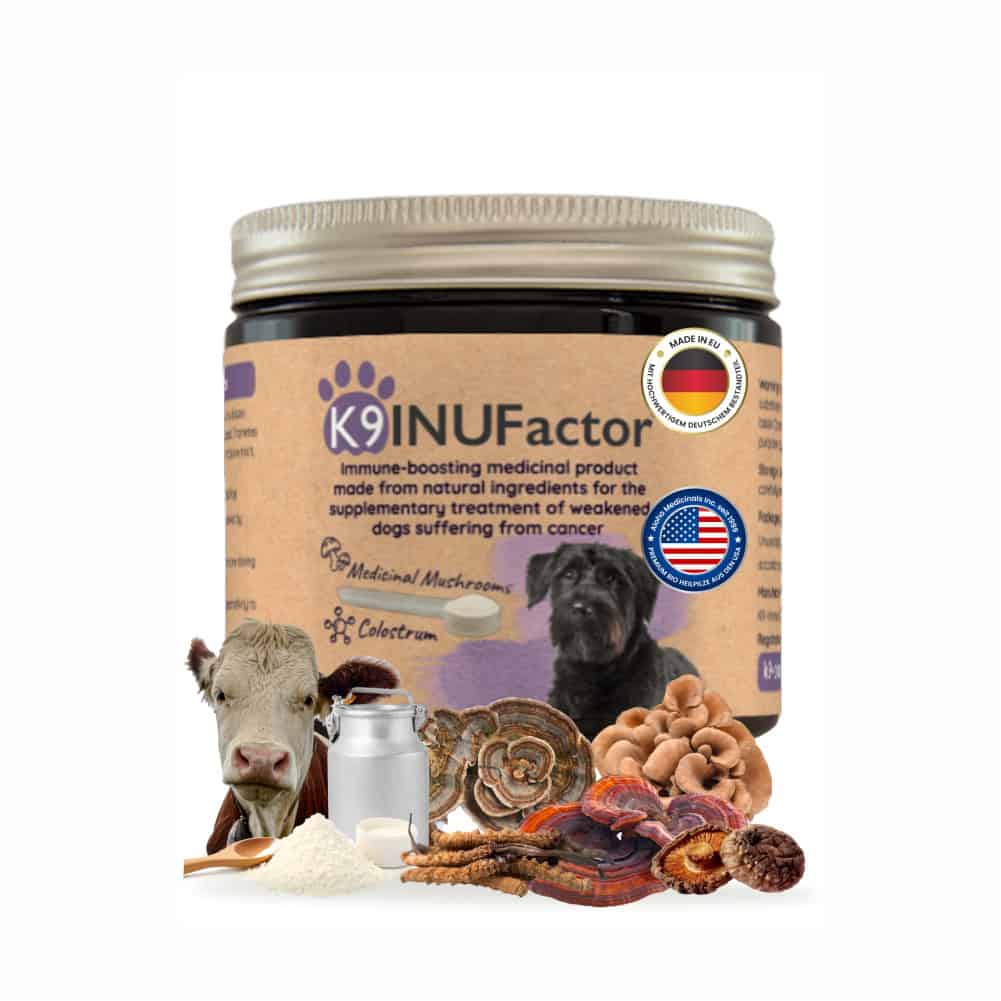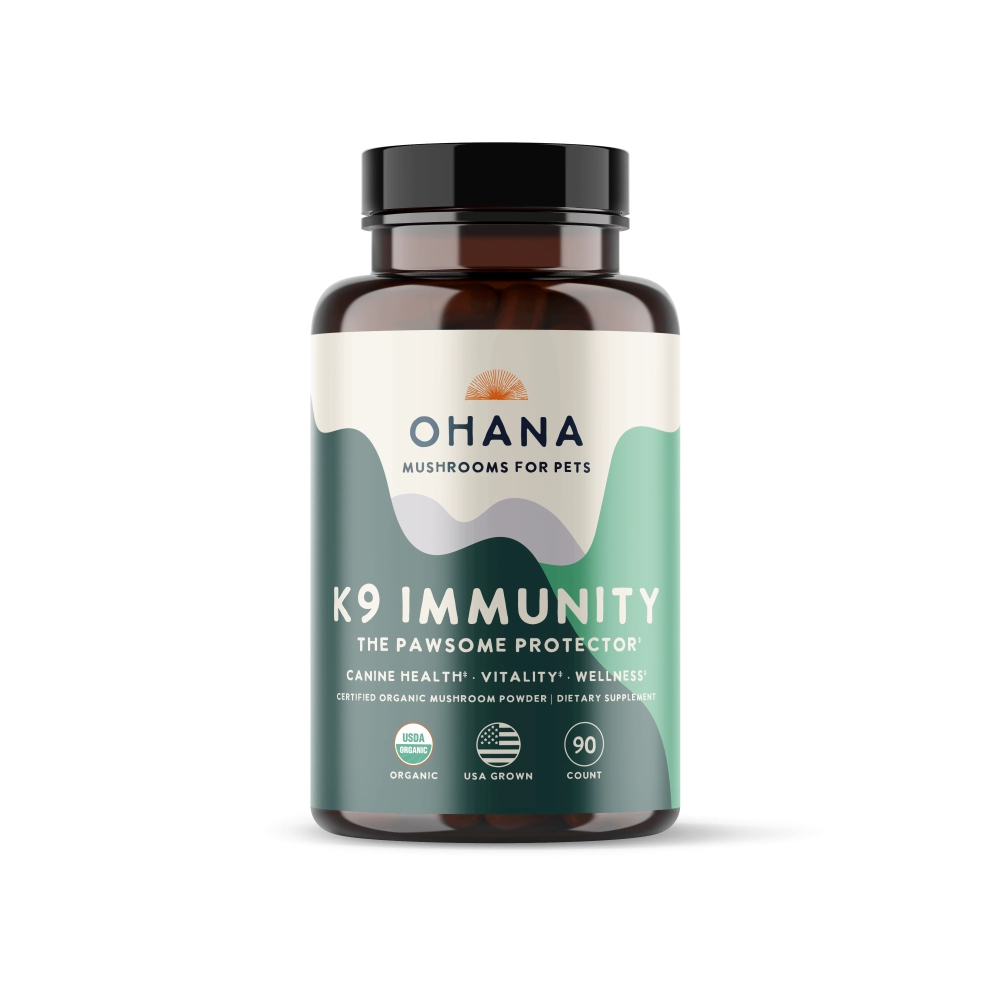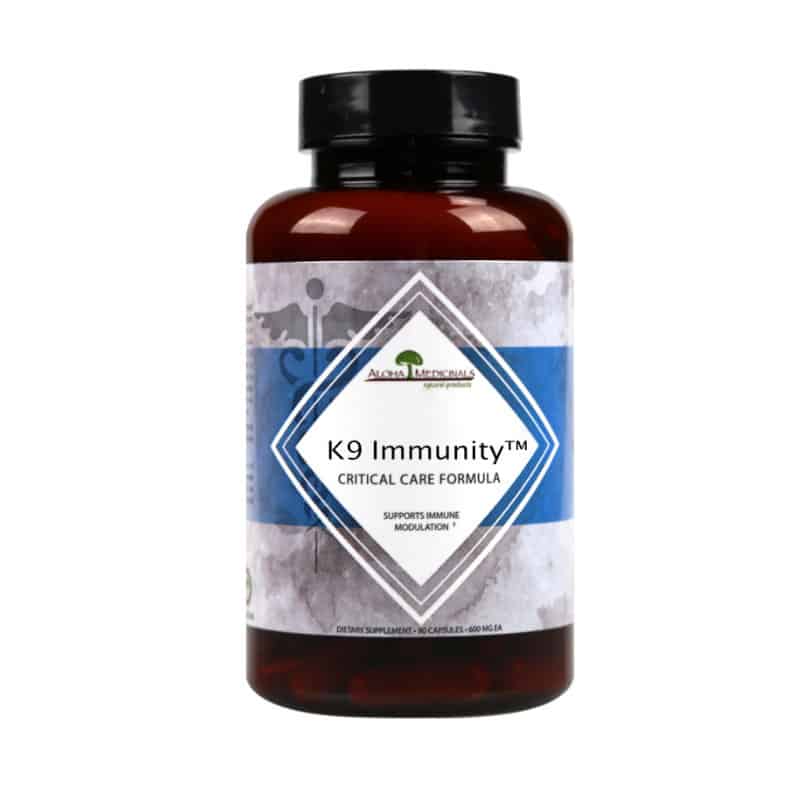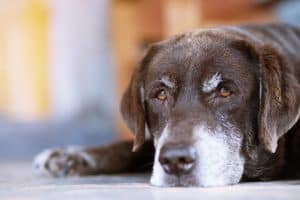Dog cancer – development, symptoms, diagnostics, treatment
Dog cancer is unfortunately a common disease, and for many pet owners it is a frightening diagnosis. However, it is important to know that different types of tumors behave differently, and early detection, proper treatment, and immune system support can significantly improve a dog’s life expectancy.
Table of Contents
- What exactly is dog cancer?
- The process of cancer development
- The stages of tumors
- What symptoms may indicate dog cancer?
- How is the diagnosis made?
- Conventional treatment options
- Immunomodulatory therapy and natural support
- Nutrition and diet for dogs with cancer
- Prevention, lifestyle, and the owner’s role
- New therapeutic directions
- Frequently Asked Questions
- More about types of dog cancer
What exactly is dog cancer?
In a dog’s body, millions of new cells are produced every day, because they replace aged or damaged ones, and this process is completely natural, as it is an essential part of life. However, errors can occur during cell division, and in such cases abnormal, mutant cells are created.
The immune system’s job is to identify and destroy these faulty cells. The defense mechanism mainly works through lymphocytes and so-called NK cells, which constantly “patrol” the body searching for malfunctioning cells. If the immune system works properly, the abnormal cells disappear before they can cause problems.
Cancer develops when these abnormal cells “escape” the body’s defenses: they continue dividing, multiply, and eventually form a mass of tissue called a tumor. Therefore, cancer is often the result of a malfunction in the immune system.
The process of cancer development
Cancer does not appear overnight but develops over a longer period through several stages. Every day, millions of new cells are produced in the body, and faulty, mutant cells regularly occur among them. This in itself is a natural process, since the immune system’s task is to detect and eliminate them.
- Formation of cell errors: genetic errors may occur during cell division, which can be increased by environmental hazards (toxins, radiation), genetic predisposition, and aging.
- The immune system’s response: in a healthy body, lymphocytes and NK cells recognize and destroy abnormal cells.
- The consequence of failure: if the immune system does not function properly, abnormal cells multiply, divide uncontrollably, and create tumors.
Cancer is therefore not the result of a single event but a longer process in which abnormal cells gradually take control of the body.
The stages of tumors
The progression of cancer is defined by so-called stages. This classification considers not only the size of the tumor but also the extent of its spread and the presence of metastases. Determining the stage is crucial for both the treatment plan and prognosis.
- Stage I: the tumor is small and affects only the specific tissue. Often symptom-free, and if detected in time, it can be surgically removed.
- Stage II: the tumor grows but has not yet spread beyond the surrounding tissues. At this point, surgery may still bring complete recovery.
- Stage III: the tumor is larger and may affect nearby lymph nodes. Treatment is more complex, and the chance of recurrence is higher.
- Stage IV: metastases develop in other organs, such as the lungs, liver, or bones. In this stage, therapy mainly aims to improve the dog’s quality of life.
Metastasis occurs when cancer cells detach from the original tumor and reach other organs via the blood or lymphatic system. That is why early detection is key: the sooner the diagnosis, the higher the chance of successful treatment.
What symptoms may indicate dog cancer?
The signs of cancer are often insidious and barely noticeable at first. The most common early symptoms include unexplained weight loss, loss of appetite, fatigue, and the appearance of a palpable lump. Dog cancer can have many other signs, which we describe in detail on our page about dog cancer symptoms.
How is the diagnosis made?
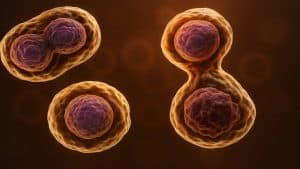
- physical examination,
- laboratory tests (blood, urine),
- ultrasound and X-ray,
- CT or MRI,
- biopsy and histological analysis.
Conventional treatment options
The most common methods used in treating dog cancer are surgery, chemotherapy, and radiotherapy. Their purpose is to directly reduce or remove the tumor. While effective at destroying cancer cells, they often do not address the underlying cause of the disease: the malfunction of the immune system.
Immunomodulatory therapy and natural support
Immunomodulatory therapy aims to strengthen the dog’s defense system alongside conventional treatments, so the body itself can fight cancer cells more effectively.
- reducing or removing the tumor with conventional methods, such as surgery, chemotherapy, and radiation, so the body has less burden to fight,
- and stimulating the immune system in a targeted way with natural substances, because this helps the body recognize and destroy abnormal cells.
Anticancer effects of medicinal mushrooms
Medicinal mushrooms – such as Turkey tail, Reishi, Shiitake, Maitake, and Cordyceps – contain polysaccharides, mainly beta-glucans, which have been proven to activate immune cells. They boost natural killer (NK) cell activity, support macrophages, inhibit metastasis formation, and have anti-inflammatory and antioxidant properties.
K9 INU®, K9 INUExtra®, K9 Immunity™, and K9 Immunity Plus™ contain extracts from several medicinal mushrooms that synergistically strengthen the body’s natural defenses.
Colostrum and transfer factors
Colostrum, or first milk, is especially rich in immunological substances. The transfer factors it contains support cell-to-cell communication and “teach” the immune system to recognize abnormal cells. While they are not sufficient alone to defeat cancer, they significantly enhance the effects of medicinal mushrooms and other immunomodulators.
Other natural supplements against cancer
- Omega-3 fatty acids: (EPA and DHA) not only have anti-inflammatory properties, but they may also slow cancer progression, and they further support overall cell health.
- Curcumin: this active compound in turmeric provides strong antioxidant effects, and it also fights cancer cells while protecting healthy ones.
- Antioxidant vitamins: (e.g. vitamins C and E) protect cells from oxidative stress, which can contribute to cancer development.
- Probiotics: by supporting gut flora, they strengthen the immune system, which plays a key role in cancer defense.
Nutrition and diet for dogs with cancer
Proper nutrition is crucial for dogs with cancer. Their bodies often have increased energy and nutrient needs, so the diet must support not only strength but also immune function. Veterinary recommendations include:
- High-quality protein: good animal protein sources (e.g. poultry, fish, eggs) help maintain muscle mass and are easily utilized by the body.
- Restriction of carbohydrates: owners should avoid fast-absorbing carbohydrates, because cancer cells prefer to use sugars as an energy source, and this can accelerate their growth.
- Omega-3 fatty acids: EPA and DHA from fish oil or krill oil not only reduce inflammation but also enhance the effectiveness of cancer therapies, while supporting overall cell health.
- Antioxidant vitamins: vitamins E and C protect cells from oxidative stress, which often accompanies cancer processes, and they also strengthen the body’s natural defenses.
These principles guide every owner, but you must always tailor the exact diet to your dog’s condition and treatment plan. You can find detailed dietary recommendations in our article on dog cancer and nutrition.
Prevention, lifestyle, and the owner’s role
We cannot always prevent dog tumors, but we can do much to make a dog’s body stronger against disease. A balanced diet, quality supplements, regular exercise, and stress reduction all support a healthy immune system, and avoiding environmental toxins, such as cigarette smoke and chemicals, is equally important. Therefore, annual veterinary check-ups also offer the chance to detect disease early, while providing reassurance for the owner.
If a dog is already diagnosed with cancer, then improving quality of life comes first. A comfortable bed, physiotherapy, massage, or even hydrotherapy can help maintain mobility and well-being, and veterinarian-supervised pain management is essential. At the same time, a calm, loving environment ensures that the dog feels safe and supported.
However, none of this works without the owner’s active participation, because treatment success depends on daily care. Administering medications correctly, attending check-ups, following the prescribed diet, and continuously monitoring the dog’s condition are all the owner’s responsibility. Most importantly, the best gift a dog owner can give is attention, care, and love, and without these, even the most modern treatments cannot be truly effective.
Dog cancer – new therapeutic directions
Veterinary oncology is constantly advancing. Promising research is being conducted on monoclonal antibodies, gene therapy, and vaccine-based treatments. Although these are still experimental, they may open new possibilities for treating dogs with cancer in the future.
Frequently Asked Questions about dog cancer
❓ Can dog cancer be prevented?
Complete prevention is not possible, but early spaying/neutering, a balanced diet, regular exercise, and avoiding toxins significantly reduce the risk.
❓ At what age is cancer most common in dogs?
Age is one of the biggest risk factors. Older dogs are more commonly affected, since the immune system becomes less effective and more abnormal cells develop.
❓ What symptoms may indicate cancer?
Palpable lumps, unexplained weight loss, loss of appetite, fatigue, coughing, bleeding, or behavior changes may all be suspicious signs.
❓ How is dog cancer diagnosed?
The veterinarian performs a physical examination, imaging diagnostics (ultrasound, X-ray, CT/MRI), and histological testing (biopsy).
❓ What treatment options are available?
The most common methods are surgery, chemotherapy, and radiation therapy. As a complement, immunomodulatory therapies and natural supplements can also help.
❓ What is the quality of life for a dog with cancer?
Proper treatment, pain relief, a supportive diet, exercise, and a calm environment can greatly improve a dog’s well-being, even while it is living with the disease.
❓ How long can a dog live with cancer?
This depends on the type and stage of the tumor and the chosen therapy. With early detection and proper treatment, many dogs can live for years with good quality of life.
More about types of dog cancer
- Osteosarcoma in dogs
- Hemangiosarcoma in dogs
- Dog lymphoma
- Dog mammary cancer
- Mast cell tumor in dogs
- Dog brain tumors
Important: This article is for informational purposes only, and it does not replace veterinary examinations or treatments, because an accurate diagnosis and appropriate therapy always require consultation with your veterinarian.
References:
- Regan, D., Guth, A., Coy, J., & Dow, S. (2016). Cancer immunotherapy in veterinary medicine: Current options and new developments. Veterinary Journal, 207, 20–28.
- Paris, S., et al. (2020). β-Glucan-induced trained immunity in dogs. Frontiers in Immunology, 11, 566893.
- Amaral, A. R., et al. (2025). Connection between nutrition and oncology in dogs and cats. Frontiers in Veterinary Science, 12, 1490290.
- Varnosfaderani, S. M., et al. (2024). Potential promising anticancer applications of β-glucans. Frontiers in Veterinary Science, 11, 10776902.
- Playford, R. J., Weiser, M. J., & Marchbank, T. (2022). Colostrum and transfer factors in animal immune support. Animals, 12(15), 1567.
- Zheng, Z., Tang, W., Lu, W., Mu, X., Liu, Y., Pan, X., Wang, K., & Zhang, Y. (2022). Metabolism and biodegradation of β-glucan in vivo. Frontiers in Veterinary Science, 9, 889586.
- Fonseca-Alves, C. E., Queiroga, F. L., & Massoco, C. O. (2024). Editorial: New insights in veterinary cancer immunology. Frontiers in Veterinary Science, 11, 1440527.
- Cornell University College of Veterinary Medicine, Riney Canine Health Center. (n.d.). Immunotherapy treatment for dogs. Retrieved September 29, 2025, from https://www.vet.cornell.edu
